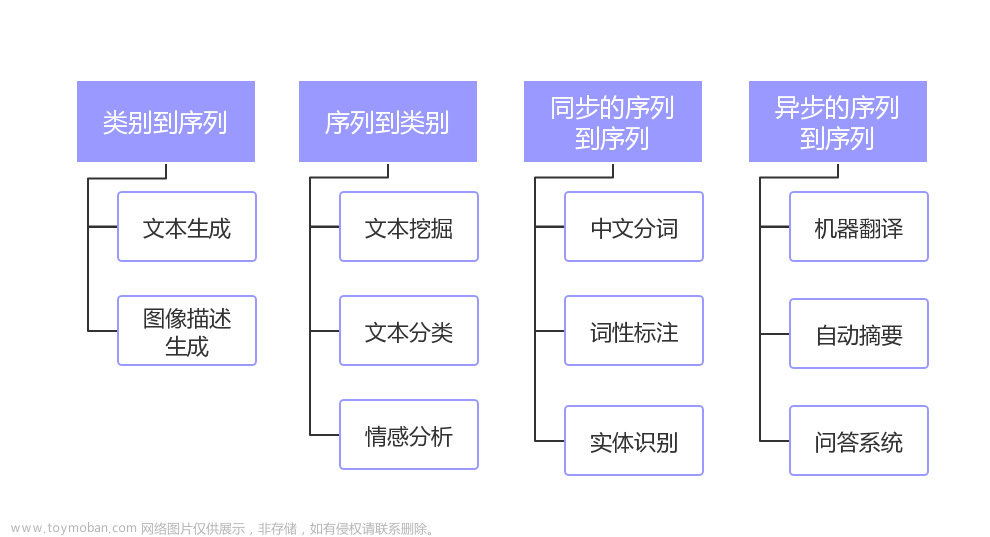LLaMA 模型
LLaMa 是一个大型语言模型,由 Meta 开源。
它的全称是 Large Language Model Meta AI,参数量从 70 亿到 650 亿不等。
例如,130 亿参数的 LLaMA 模型在大多数基准上可以胜过参数量达 1750 亿的 GPT-3,而且可以在单块 V100 GPU 上运行。
而最大的 650 亿参数的 LLaMA 模型可以媲美谷歌的 Chinchilla-70B 和 PaLM-540B。
Vicuna 模型
Vicuna 是一个由 UC 伯克利、CMU、斯坦福等机构的学者联手发布的最新开源大模型。
基于 Meta 开源的 LLaMA 大模型,使用 ShareGPT 平台上的用户共享对话数据微调而来。
包含 7B 和 13B 两个型号的开源预训练模型。
 文章来源地址https://www.toymoban.com/news/detail-697349.html
文章来源地址https://www.toymoban.com/news/detail-697349.html
下载模型
# 下载 Vicuna 7B
# !git lfs clone http://git.aistudio.baidu.com/180581/vicuna-7b-v1.1.git
# 下载 Vicuna 13B
!git lfs clone http://git.aistudio.baidu.com/180581/vicuna-13b-v1.1.git
开发环境
!pip install --pre --upgrade paddlenlp -f https://www.paddlepaddle.org.cn/whl/paddlenlp.html --user
!pip install paddlepaddle-gpu==0.0.0.post112 -f https://www.paddlepaddle.org.cn/whl/linux/gpu/develop.html --user
代码
import os
import glob
import paddle
from tqdm import tqdm
from paddlenlp.transformers import LlamaForCausalLM, LlamaConfig, LlamaTokenizer
pattern = 'paddle-model-?????-of-?????.pdparams'
# Vicuna 7B
# ckpt_dir = 'vicuna-7b-v1.1'
# config_dict = {
# "hidden_size": 4096,
# "initializer_range": 0.02,
# "intermediate_size": 11008,
# "max_position_embeddings": 2048,
# "model_type": "llama",
# "num_attention_heads": 32,
# "num_hidden_layers": 32,
# "rms_norm_eps": 1e-06,
# "vocab_size": 32000,
# "bos_token_id": 1,
# "eos_token_id": 2,
# "pad_token_id": 0,
# "use_cache": True,
# "use_recompute": False,
# "use_flash_attention": False,
# }
# Vicuna 13B
ckpt_dir = 'vicuna-13b-v1.1'
config_dict = {
"hidden_size": 5120,
"initializer_range": 0.02,
"intermediate_size": 13824,
"max_position_embeddings": 2048,
"model_type": "llama",
"num_attention_heads": 40,
"num_hidden_layers": 40,
"rms_norm_eps": 1e-06,
"vocab_size": 32000,
"bos_token_id": 1,
"eos_token_id": 2,
"pad_token_id": 0,
"use_cache": True,
"use_recompute": False,
"use_flash_attention": False,
}
paddle.set_default_dtype('float16')
tokenizer = LlamaTokenizer.from_pretrained(ckpt_dir)
config = LlamaConfig(**config_dict)
model = LlamaForCausalLM(config)
model.eval()
for name, layer in model.named_sublayers():
if 'rotary_emb' in name:
layer.inv_freq = layer.inv_freq.cast(paddle.float32)
paddle.device.cuda.empty_cache()
for file_path in tqdm(glob.glob(os.path.join(ckpt_dir, pattern))):
params = paddle.load(file_path)
assert model.set_dict(params)[1] == [], 'Load error.'
del params
paddle.device.cuda.empty_cache()
input_text = input('USER: ')
prompt = f'''USER: {input_text}\n\nASSISTANT: '''
with paddle.no_grad():
with paddle.amp.auto_cast(False, level='O2', dtype='float16'):
while True:
if input_text == 'exit':
break
inputs = tokenizer(
prompt,
return_tensors="pd",
return_attention_mask=True,
return_position_ids=True
)
outputs = model.generate(
input_ids=inputs.input_ids,
attention_mask=inputs.attention_mask,
position_ids=inputs.position_ids,
max_length=2048-inputs.input_ids.shape[1],
min_length=0,
decode_strategy="sampling",
temperature=0.8,
top_k=40,
top_p=0.95,
repetition_penalty=1.1,
bos_token_id=tokenizer.bos_token_id,
eos_token_id=tokenizer.eos_token_id,
pad_token_id=tokenizer.pad_token_id,
use_cache=True,
use_fast=True,
use_fp16_decoding=True)
response = tokenizer.decode(outputs[0][0], skip_special_tokens=True)
print('ASSISTANT: ' + response)
input_text = input('USER: ')
prompt += f'''{response}\n\nUSER: {input_text}\n\nASSISTANT: '''
del inputs
del outputs
del response
paddle.device.cuda.empty_cache()
文章来源:https://www.toymoban.com/news/detail-697349.html
到了这里,关于PaddleNLP使用Vicuna的文章就介绍完了。如果您还想了解更多内容,请在右上角搜索TOY模板网以前的文章或继续浏览下面的相关文章,希望大家以后多多支持TOY模板网!











